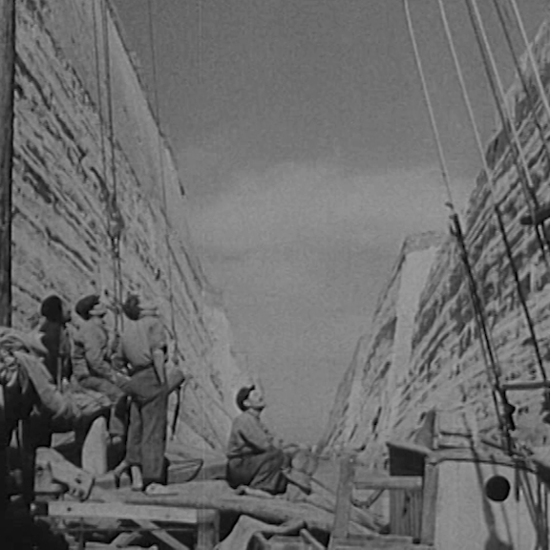Corinth Canal

-
Žanras: Documentary film
-
Metai: 1950
-
Trukmė: 00:10:08
-
Aprašymas: The film is full of contrasts. Corinth’s great past, shown by its ruins, seems to be replaced by a much less picturesque standard of living caused by poverty. A shepherd with his sheep is juxtaposed with the modern iron bridge over the canal. Old meets new, yet it is not this mix-up of technology and outdated working methods which make up the core of the film. Corinth Canal is not the story of the defeat of antiquated ideas, but rather that of how setbacks are overcome. The most important contrast in this film belongs to recent history, when the bridge was destroyed and the canal blocked. The film tells the story of captain Nicola who is transporting goods by sailing boat from Piraeus through the canal. The port of Piraeus allows the film to depict the transport of goods by the “European Recovery Program” (ERP). To a certain extent the viewer sees the Corinth Canal through Nicola’s eyes. The mixture of staged scenes and contemporary documentary footage makes the piece seem almost like ‘a film within a film’. In 1944, when they withdrew from the area, the German occupying troops rendered the crucial communication route unusable for the coming Allied forces. Pictures of trucks which have fallen into the canal seem to actually come from footage shot at the time. And possibly so do the pictures of the bridge itself being blown up. In a clever montage sequence, villagers who were expelled from their homes shortly before the explosion, appear to look back at the 25 bridge. The shepherd from the beginning of the film is also in this group. Yet today, according to the commentary, “the war, and the destruction it brought, already seems far away”. Although inscriptions left over from the occupation are still legible on the canal walls, the canal itself is once more operational. It is shown as a surprisingly slender cut in the mountains in impressive aerial shots. Surprising in view of the fact that it enables ships to steer clear of the Peloponnese and is therefore one of Greece’s most important traffic routes. The second flashback shows the clearing of the blocked canal – the work took 13 months to complete and was finished in November 1948. This was also a project in which American help played a central role. With this in mind the film is a celebration of the journey of Nicola’s ship into the Gulf of Corinth. © Rainer Rother
-
Raktažodžiai: VICTOR-E project / ruins / countryside / peasants / canal / ship / train / harbour / mountainside / worker / construction site / infrastructure / Marshall plan / ERP
-
Kolekcija:
-
Tiekėjas: Deutsches Historisches Museum
-
Teisės: In Copyright / USIA - Embassy of the United States of America / Press Office, Berlin
-
Gamybos kompanija: Ferno Productions, Paris, for ECA Greece
-
Spalva: Black & White
-
Director: John Ferno
-
Sound: With sound
-
Data:
-
Dokumento tipas:
-
Kolekcija: Films of the Marshall Plan
-
Language: en
 Deutsch
Deutsch English
English Čeština
Čeština Dansk
Dansk Français
Français Italiano
Italiano Lietuvių
Lietuvių Magyar
Magyar Nederlands
Nederlands Norsk
Norsk Português
Português Suomi
Suomi